Description
Best Spix’s Macaw Parrots For Sale
Species Overview
| Common Name: | Spix’s Macaw, little blue macaw, spix macaw |
| Scientific Name: | Cyanopsitta spixii |
| Adult Size: | 300 grams, 22 inches |
| Life Expectancy: | unknown in the wild; 20-30 years in captivity |
A member of the Psittacidae family, the Spix’s Macaw, spix macaw is a parrot also called a little blue macaw. With a relatively average size, it is not one of the large parrots – such as the hyacinth macaw with which it is sometimes confused.Diazepam uk,Mounjaro UK.
It is easily recognized by its cyan-blue plumage, a relatively light shade that becomes lighter the closer you get to the animal’s head. The separation between its body and its head is clearly marked thanks to this lightening of the feathers.hellcat engine for saledoxycycline 100mg pildiazepam 5mg pil African Grey Parrot For Sale
Its eyes are rimmed with an even lighter blue, almost white. As for its beak, it resembles those of other parrots with a prominent upper part that covers the lower part. The Spix’s Macaw/ spix macaw used its powerful beak to crack the nuts on which it fed in nature. Parrot eggs
origine and History of spix macaw
spix macaw for sale is an extinct wildlife species, although several captive birds are kept and protected and preserved in several nations of the world through extensive breeding programmes.calor gas heaters screwfix,calor gas heaters b&m,1p per hour electric heaters.aldi logs,calor gas heaters homebase,aldi firewood.Diazepam For Anxiety ,diazipam for sale.
This Macaw was caught in the 1819s, along the dry north-east of Brazil by the German scientist Johann Baptist von Spix.buy wegovy uk,where can i buy amoxicillin buy diazepam online uk.
A gorgeous blue paracave, comparing to the Hyacinth macaw which has a length of about 100 cm is the Speix’s Macaw or Little Blue Macaw.Codeine Linctus,Diazepam UK,Quaalude,Mounjaro UK,
The Spix’s Macaw is 56 cm long and weighs between 295 to 400 grams, with a spread of 64 cm. So we estimate the life of the parrot to be 28 years in the wild and in captivity for 10 longer.african grey parrots for sale,parrots for sale near me,parrots for sale glasgow.
The blue plumage becomes darker on the wings and graduated tail. The underparts are paler, rather bluish-gray. The tail feathers are pale gray and the underside of the wing shows pale gray flight feathers.pinkies weight loss tablets,pinkies diet pills,pinkies weight loss,pinkies slimming tablets.
The pale blue-gray head contrasts with the darker body.ghost energy drink uk,ghost energy,ghost sour patch.
The forehead, cheeks, and ear coverts are lightly washed blue. The hooked bill is blackish gray. Adults have pale straw-colored eyes, with a gray eyering and dark gray naked lores. The legs and feet are grayish brown.brindle boxers for sale,boxers for sale,boxer puppies for sale,boxer puppies for sale near me.
Males and females are similar, with the female slightly smaller than the male.
Juvenile resembles adults, with slightly darker plumage and a whitish-gray to gray bare facial area. It has a shorter tail than that of adults. His eyes are dark at first, but gradually clear.Parrots for sale
The Spix’s macaw, often known as the small blue macaw, is a medium-sized parrot native to Northeast Brazil. It has predominantly blue plumage. Males and females are essentially identical in appearance, but females are somewhat smaller on average.Slimming gummies
Housing for Spix’s Macaws
spix macaw for sale are Large planted flights with associated shelters are required. Wooden structures are not advised because they are heavy chewers. Typically, metal constructions with a robust mesh are employed. African grey parrot eggs for sale
It Color
Most of it in blue colours, light-blue underpieces, shining blue tops with brunish-black legs and feet.african grey for sale,african grey parrots for sale,african grey parrot for sale.duralast gold battery,duralast gold.
Years 20-30
That said, Spix’s Macaw can live in the wild for 20-30 years (longer in captivity) and the territory is quite big with areas that are hard to reach.boxer puppies,boxer pups,brindle boxer puppies

Cage : Because they enjoy chewing, new branches and tree trumps should be available on a regular basis. They require these for both enjoyment and to trim their muscular beaks.
Care
Because they enjoy bathing, keep water in small containers in their cages.
So do not expose them to temperatures below 20 degrees Celsius (68 degrees Fahrenheit).
The Behavior’s fascinating and vibrant behavior One of the most popular pets is the Spix Macaw. So we know them for being raucous, as well as lively and playful.Parrot eggs for sale uk,fertile parrot eggs for sale uk.
Diet
They eat primarily seeds and nuts, although they may also eat fruits and vegetables such as apples, bananas, plums, cucumbers, and carrots. Other choices include pigeon food and tree bark. So it requires supplements of vitamins and minerals for birds.codeine linctus
Lifespan
The captive population lives according to the study, approximately ten years longer than the wild. Years 20-30
That said, Spix’s Macaw can live in the wild for 20-30 years (longer in captivity) and the territory is quite big with areas that are hard to reach.semaglutide kopen kruidvat
Health issues
spix macaw for sale Take a look at feathers, droopy eyelids and fluffy droppings, all indicators of disease. Only make a quick appointment to the veterinarian when you see any of these signs.ghost energy drink uk,ghost energy,ghost sour patch.
Lifespan of spix macaw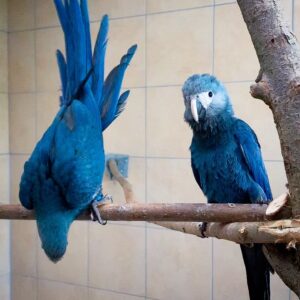
Based on the limited data that is available on this species, They can live between 20 to 40 years, the average being 28 – 29. we estimate that captive birds can live about 10 years longer than wild specimen. phenergan night time,diazepam 5mg pil,nitrazepam 20mg
The oldest recorded Spix’s Macaw hatched in 1976 and in 2010 – at the ripe age of 35 years – he produced two chicks. (Hatched at the Al Wabra Wildlife Preservation [AWWP] in Doha, Qatar).
Diet / Feeding
Natural Diet:
They feed on various seeds, nuts, fruits (mainly cactus fruits), flowers, leaves and other plant material found within its range.
They eat the seeds ofFavela / Faveleira trees (Cnidoscolus phyllacanthus) and Pinhão-brabo trees (Jatropha pohliana var. mollissima); and the fruits of Fachiero cacti (Cereus squamosus) and local licuri palm (Syagrus coronata).
They also take the fruits and seeds of the Joazeiro cacti (Ziziphus joazeiro) and the ” paudecolher” (Maytenus rigida); and the nuts of the Buriti palm (Mauritia flexuosa) (Meyer de Schauensee 1971, Sick 1985)
Other feeding plants include (or may include) the following.
Baraúna (Schinopsis brasiliensis), Imburana (Commiphora leptophloeos), Facheiro (Pilosocereus pihauiensis), Phoradendron sp., Caraibeira Tree (Tabebuia caraiba), Angico (Anadenanthera macrocarpa), Umbu (Spondias tuberosa), Unha-de-gato (Acacia paniculata), Geoffroea spinosa (Combretum leprosum), buriti palm (Mauritia flexiosa)
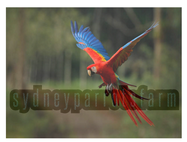

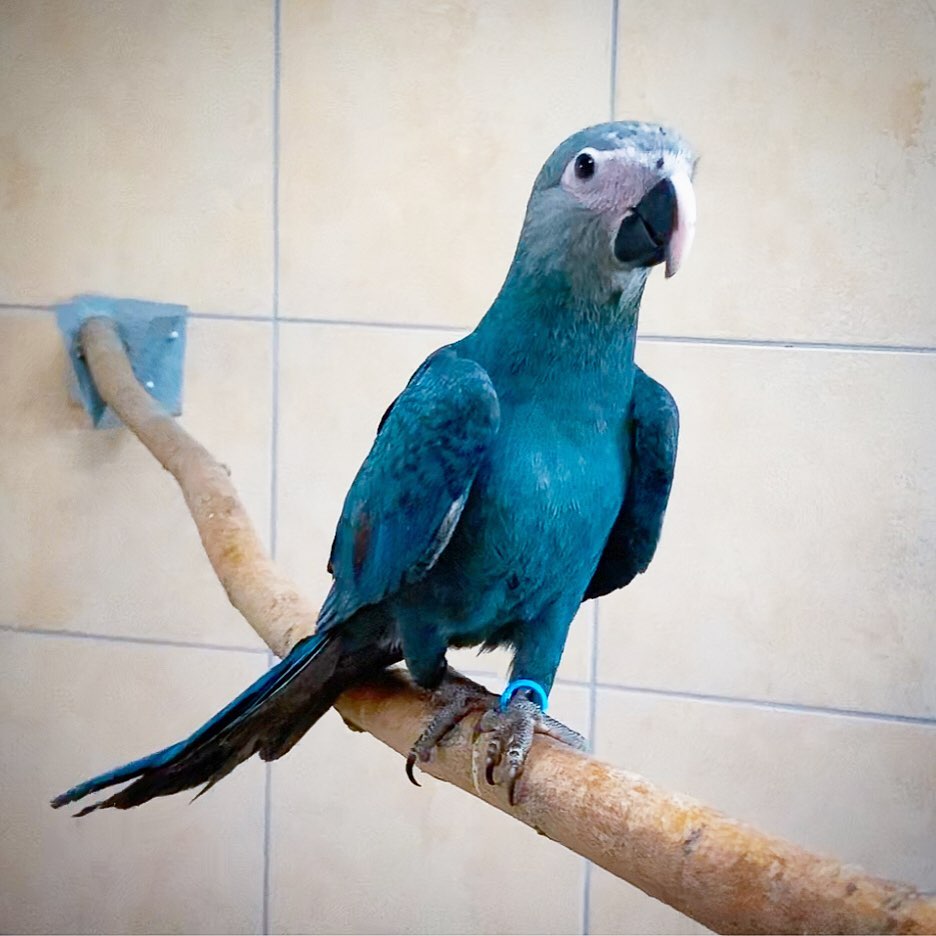
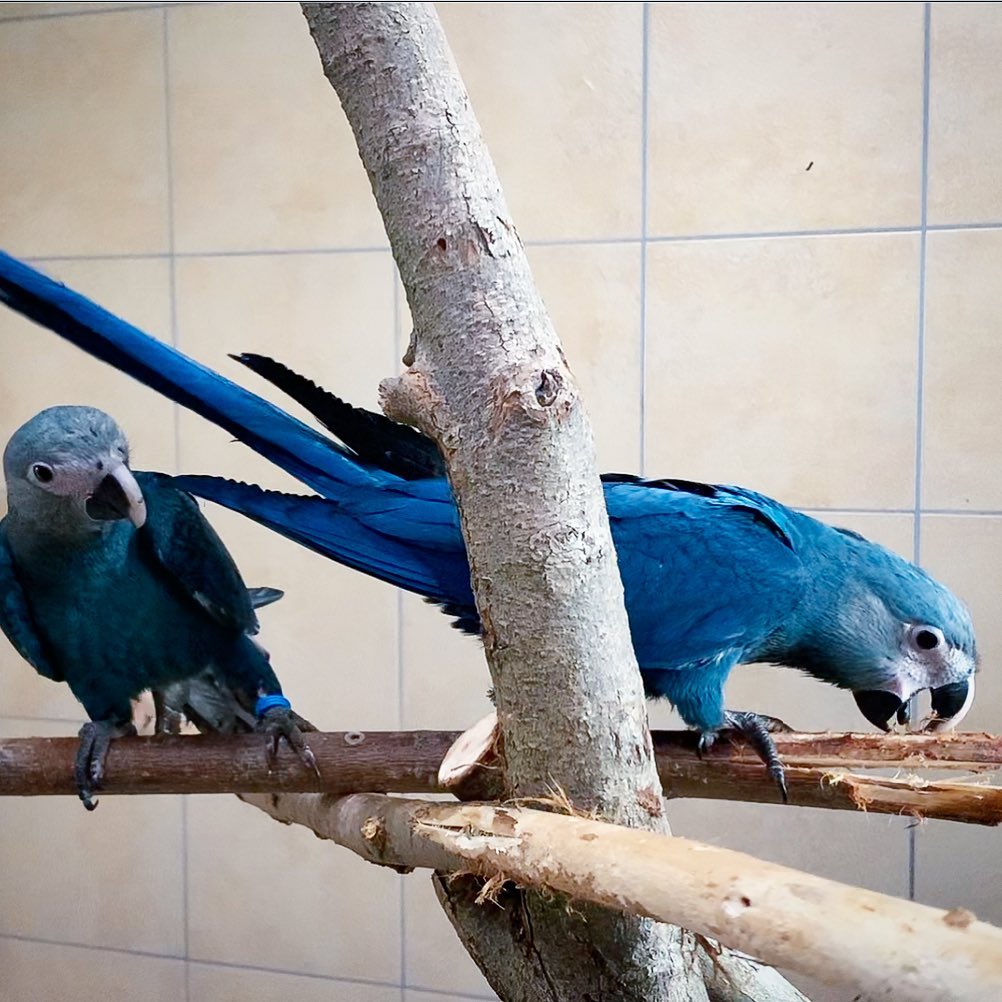

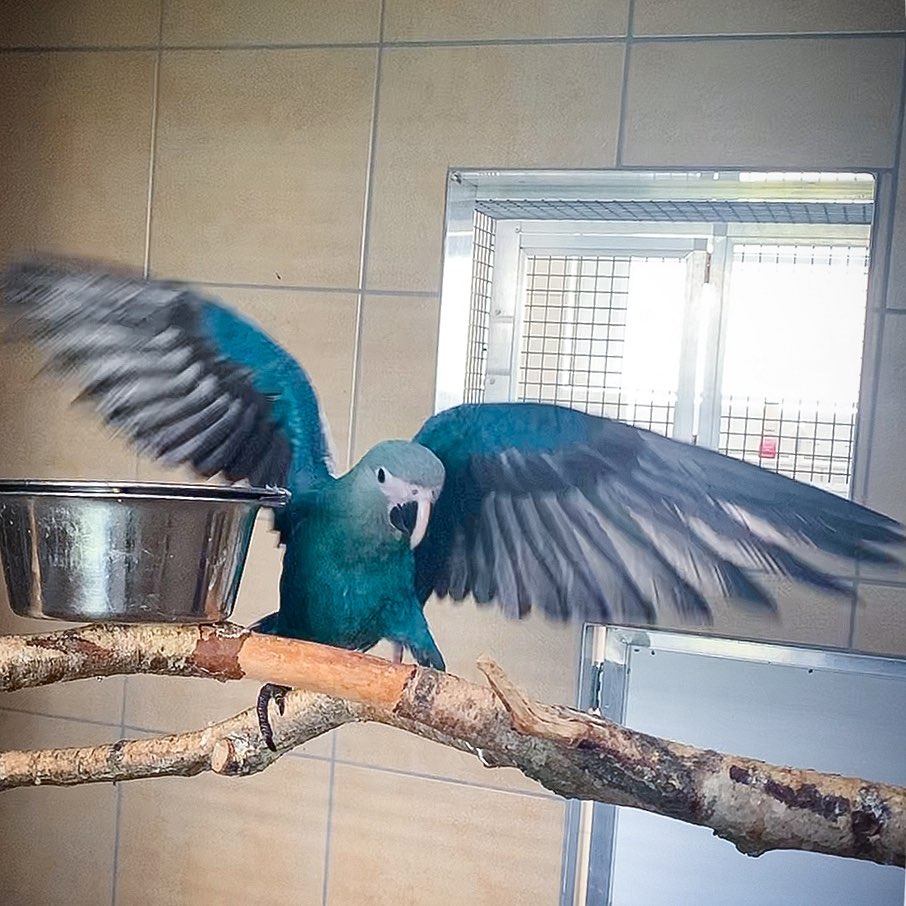


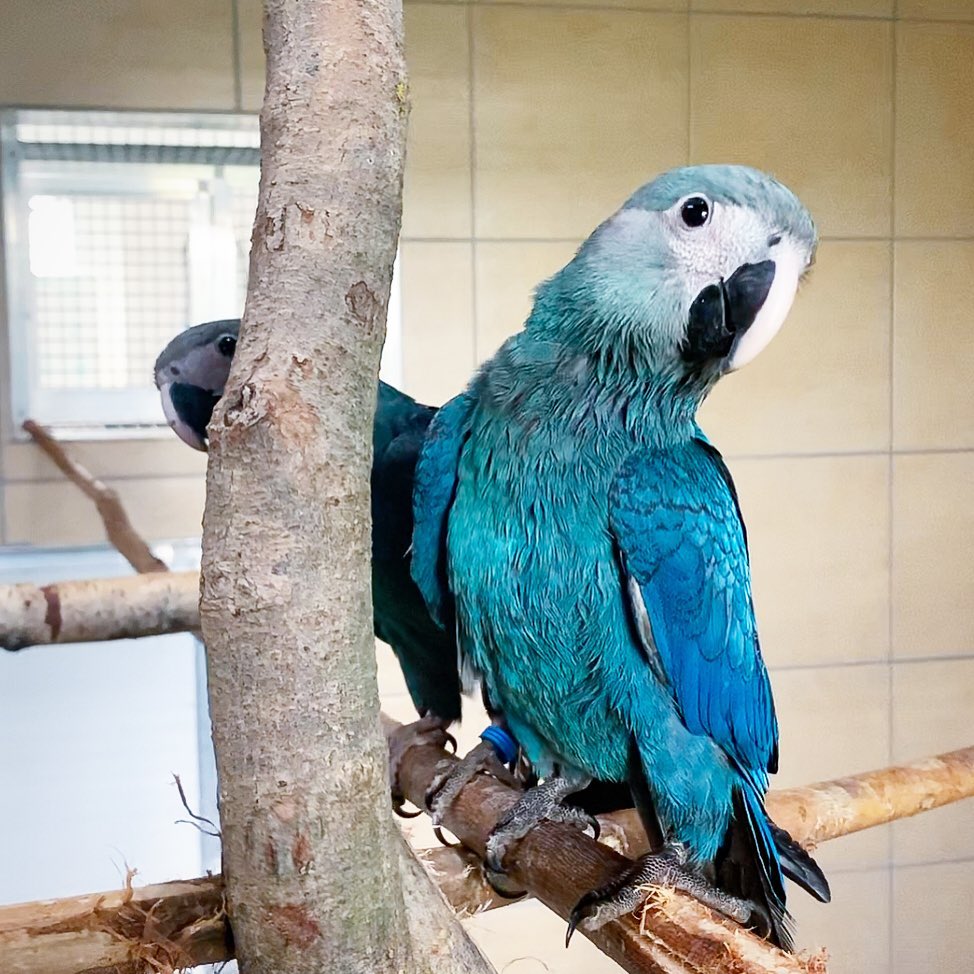
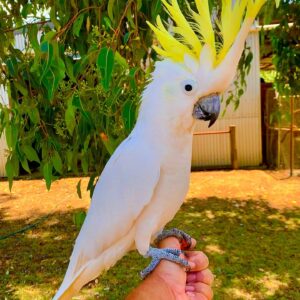
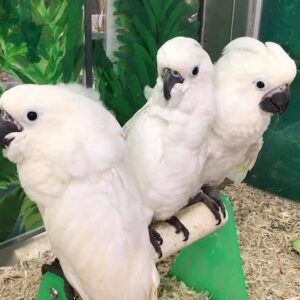
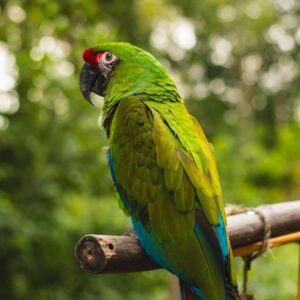
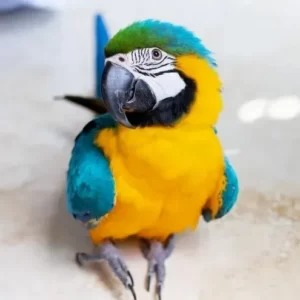
Reviews
There are no reviews yet.